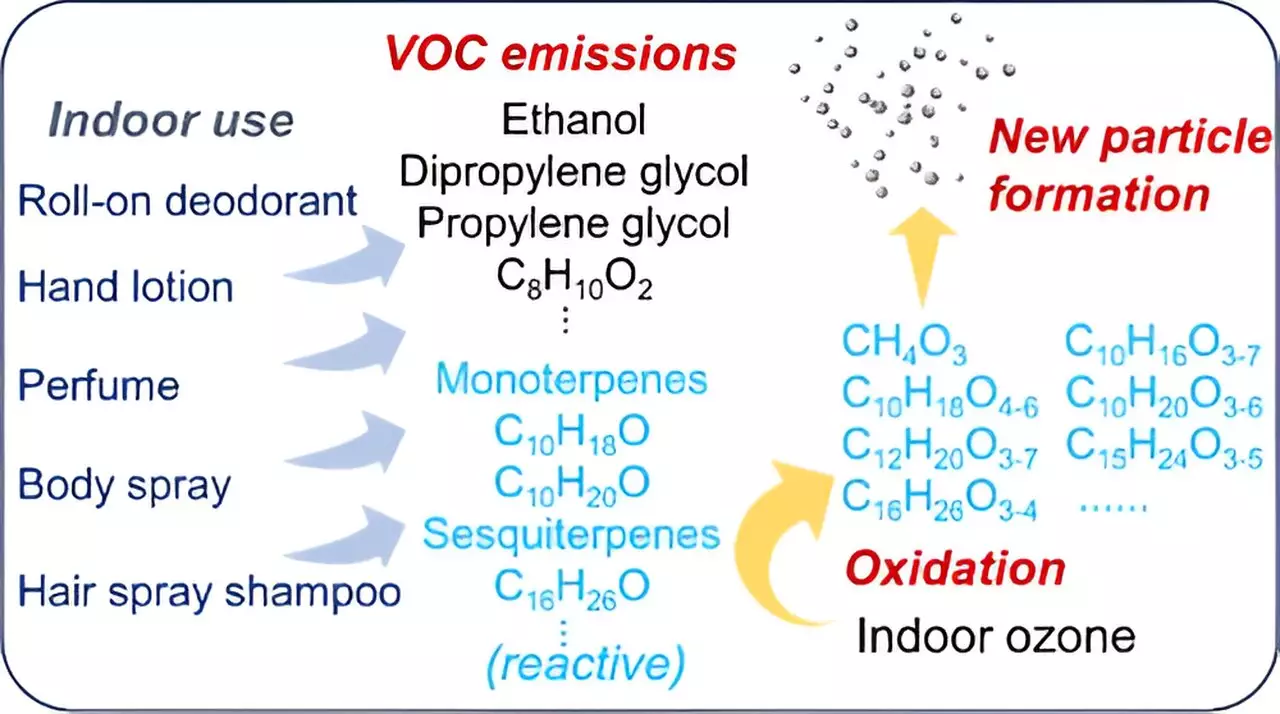In recent years, as our understanding of air quality has matured, significant attention has shifted towards the often-overlooked implications of household consumer products on our health. A groundbreaking study from the École Polytechnique Fédérale de Lausanne (EPFL) has unveiled startling insights into how commonplace personal care products are contributing to indoor air pollution. This research expands our understanding of indoor environments and raises vital questions regarding our daily habits and their long-term impacts on respiratory health.
The study, spearheaded by Dusan Licina and his team, began with a deceptively simple collection of personal care items including deodorants, lotions, and perfumes. While these products are marketed for their ability to enhance our beauty and well-being, their role in indoor air quality is somewhat alarming. The research indicates that when used, these products emit more than 200 volatile organic compounds (VOCs), compounds that readily evaporate and can provoke air quality issues when trapped indoors.
What is particularly concerning is the complex interaction between these VOCs and ozone, a gas that, while often regarded as an outdoor air pollutant, can infiltrate homes through various means such as open windows. The results indicated that common household activities—using printers, cooking, or even just breathing—can elevate ozone levels in interiors, further exacerbating the problem by facilitating chemical reactions that yield new, potentially harmful compounds.
Licina’s innovative approach utilized environmental chambers—highly controlled settings designed to mimic real indoor environments. This setup allowed for an accurate analysis of how these products behave during normal usage and their chemical interactions when ozone is present. Through meticulous experimentation, they documented the evolution of indoor air quality across a spectrum of conditions.
Over two years, with the aid of sophisticated analytical instruments, the team quantified VOC emissions and the formation of new particulates when ozone was introduced. The findings highlighted a dramatic increase in harmful particles, particularly from products like perfumes and sprays. The concentrations of newly formed substances surpassed levels typically found in major urban centers, sparking significant concerns regarding inhalation risks.
The discovery of ultrafine particles forming in significant amounts raises critical health questions. Licina cautions that, despite our reliance on these consumer products for grooming and aesthetics, their inhalation—particularly in high quantities—might have unanticipated effects on lung health. The research emphasizes an urgent need for further toxicological studies to bring clarity to these implications, particularly since many residents remain unaware of the contamination occurring in the comfort of their homes.
As the understanding of these mundane products evolves, so too must our response to them. The potential risk they pose to our health cannot be underestimated, especially in an age where the importance of clean indoor air is becoming increasingly recognized.
Considering the intricate relationship between personal care products and indoor air quality, it becomes imperative to seek practical solutions. Strategies such as improving ventilation during product use can mitigate some of the adverse effects, allowing for the dispersal of VOCs before they accumulate. Additionally, integrating air purification systems that utilize activated carbon and other filtering techniques can substantially enhance indoor air quality.
Moreover, consumers may need to rethink their personal care routines entirely. The recommendation to pivot towards natural alternatives is not merely a suggestion but a necessary shift towards minimizing chemical exposure. Products that rely on less reactive compounds can lessen the likelihood of adverse reactions with ozone and help maintain a healthier indoor environment.
The findings from EPFL constitute a call to action for both consumers and manufacturers. As research continues to unfold, the implications of our daily product choices warrant a reevaluation of how we approach personal care. By fostering awareness and implementing thoughtful changes, we can work towards a healthier living space, ensuring that our pursuit of beauty does not come at the expense of our respiratory health. As a society, it is crucial that we prioritize our well-being in the face of invisible but significant risks that linger in our indoor air.


Leave a Reply